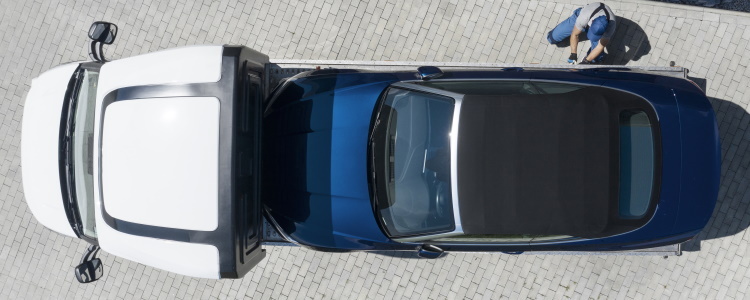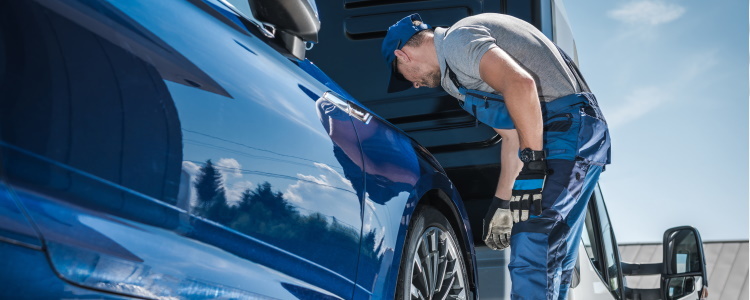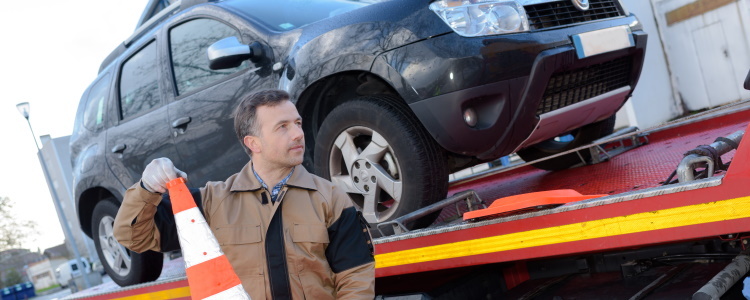Having your car repossessed isn’t a great feeling, not to mention it's inconvenient! However, you may be able to get your vehicle back. Here are seven steps to take if you find your car has been repo'd by your lender.
1. Know Your Repo Rights
You have rights when it comes to a vehicle repossession, and there are things that a lender and repo man can and can’t do when they recover the car.
After your vehicle is towed away, you have the right to know where it is sent so you can recover your personal items from the cabin.
The recovery company hired by your lender isn’t allowed to repossess your car out of your locked garage or "breach the peace" while they take it (such as breaking your door down to get to it). They can, however, repo it while you’re at work, in the grocery store, or right from your own driveway.
2. Contact Your Lender
When your vehicle gets repossessed, there’s usually a reason. Oftentimes, it’s a response to missed payments and defaulting on the loan. Your lender can act as quickly as allowed in your loan contract. Some reserve the right to take your car after only one missed payment, so check your loan contract for details on how soon they can repo your vehicle.
After your car is repossessed, contact your lender and ask exactly why. Although they have likely sent you in writing about the repo, you should still contact them. While the most common reason is missing payments, some lenders repossess vehicles because of a lapse in auto insurance coverage. See if you can work something out with them quickly and solve the issue.
Some lenders offer you the ability to reinstate the loan if you make up all of your missed or late payments, or they may ask for the full loan balance in one lump sum payment. You won’t know your options until you ask, so act quickly if you want a chance to get the car back.
3. Consider the Auction
After a vehicle is repossessed, it’s usually put up for auction. Most lenders send you a letter telling you when and where the auction is set to take place, since you have the right to bid on the car and gain full ownership if you have the cash.
If the vehicle is purchased at auction, that selling price is put toward your loan balance. If the auction didn’t yield enough money to cover the total balance of your auto loan, this is called a deficiency balance, and you’re responsible for paying it.
4. What’s Next for You?
If your car was repossessed and you’re unable to reinstate the auto loan, it might be a better idea to let it go. If you're behind on the payments due to an unforeseen life event, or if you're in over your head, it may be a better idea to pay the deficiency balance, if there is one, and move on.
Take time to evaluate what you need next regarding your financial health: can you afford the payments if you get the vehicle back, and are you at risk for getting the car repossessed again?
5. Know Where Your Credit Stands
After a repossession, your credit reports aren’t going to like it very much. Repos can cause major damage, and have the potential to lower your credit score around 100 points, but this varies. Keep in mind, the actual repossession is only one part of the credit damage you incur after a repo.
The missed or late payments that likely lead to the repossession hurt your credit, too. Payment history is the single most influential part of your FICO credit score, making up 35% if it. A vehicle repo and any missed payments associated with it can remain on your credit reports for up to seven years before they fall off.
After a repossession, check your credit reports, see what’s being reported, and learn where your credit score sits. You can request your credit reports for free from www.annualcreditreport.com.
6. Getting Another Vehicle
After a repossession, most lenders aren’t likely to consider you for auto financing for a while. If the repo on your credit reports is less than a year old, you’re likely to be turned down for a car loan by most direct and third-party auto lenders. For those who need a vehicle immediately following a repossession, there are dealerships that aren’t as concerned about your credit reports as traditional lenders.
Buy here pay here (BHPH) dealers don’t usually check their borrowers’ credit reports during the approval process. While a BHPH used car lot has some disadvantages – like assigning higher than average interest rates, requiring a down payment, and maybe not reporting your loan to the credit bureaus – it’s an auto financing option that many bad credit borrowers look to.
And of course, you have the option to buy an inexpensive vehicle with cash. Cash is king, and if you have the money on hand to buy from a private seller, there’s typically no credit check involved in a private car sale.
7. Give Yourself Time to Heal
Time heals credit scores. While a repo can hurt your credit score now, a negative mark’s impact on your credit score lessens after each passing year.
After a year has passed following a vehicle repossession, you can look into subprime lenders that are signed up with special finance dealerships. Subprime auto lenders report their loans to the credit bureaus, and work with credit-challenged borrowers. With timely payments on a subprime car loan, you can rebuild your credit for future credit chances.
While you’re letting your credit reports heal, focus on repairing your credit in other areas, too.
Finding a Dealership Near You
Locating a dealer that can work with your credit can be a hassle, but we want to make it easier. Here at Auto Credit Express, we have a network of dealerships all over the country that assist bad credit borrowers.
To get matched to a dealer near you, fill out our free auto loan request form. There’s never an obligation to buy anything, and we’ll get to work for you right away.
















